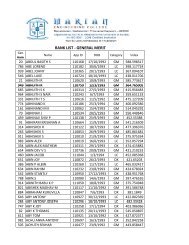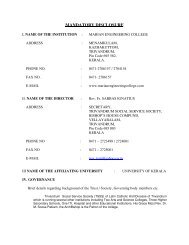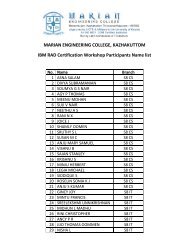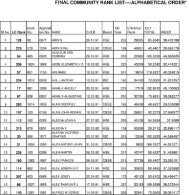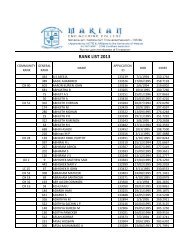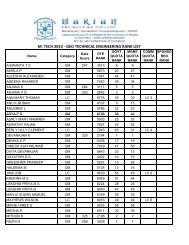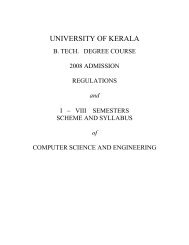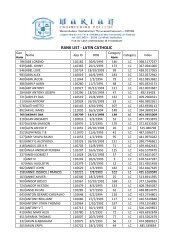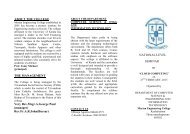UNIVERSITY OF KERALA - College of Engineering, Trivandrum
UNIVERSITY OF KERALA - College of Engineering, Trivandrum
UNIVERSITY OF KERALA - College of Engineering, Trivandrum
Create successful ePaper yourself
Turn your PDF publications into a flip-book with our unique Google optimized e-Paper software.
08.705.4 Elective-III STRUCTURAL ANALYSIS FOR<br />
DYNAMIC LOADS<br />
L T P/D Cr<br />
3 1 0 4<br />
Review: Dynamic Systems - parameters, Single degree <strong>of</strong> freedom (SD<strong>OF</strong>) systems, Equation <strong>of</strong> motion,<br />
Natural frequency, Free and forced vibration.<br />
Module I<br />
SD<strong>OF</strong> system subjected to harmonic loading - steady state amplitude, Dynamic magnification factor,<br />
Resonance.<br />
Impulse response function, Response <strong>of</strong> SD<strong>OF</strong> system subjected to general dynamic loading – Duhamel<br />
integral, Response <strong>of</strong> SD<strong>OF</strong> system to rectangular and triangular loads.<br />
SD<strong>OF</strong> system subjected to support motion, Vibration isolation, Transmissibility.<br />
Module II<br />
Multi-degree <strong>of</strong> freedom (MD<strong>OF</strong>) systems, Lumped mass systems, Shear building frames, Equation <strong>of</strong> motion<br />
<strong>of</strong> MD<strong>OF</strong> systems, Natural frequencies and mode shapes, Orthogonality <strong>of</strong> mode shapes, Free and forced<br />
vibration analysis - Mode superposition method.<br />
Module II<br />
Systems with distributed parameters – equation <strong>of</strong> motion for beam flexure (elementary case), Natural<br />
frequencies and mode shapes <strong>of</strong> simply supported beams.<br />
Earthquake analysis – response spectrum, Response spectrum analysis <strong>of</strong> MD<strong>OF</strong> system subjected to support<br />
motion.<br />
Calculation <strong>of</strong> design lateral forces due to earthquake – IS code method (IS:1893-2002).<br />
References:<br />
1. M. Mukhopadyay, Structural Dynamics - Vibrations & Systems, Ane Books India, New Delhi.<br />
2. R.W. Clough and J. Penzien, Dynamics <strong>of</strong> Structures, McGraw-Hill Inc., New York.<br />
3. Mario Paz, Structural Dynamics - Theory and Computation, CBC Publishers and Distributors, New<br />
Delhi.<br />
4. A.K. Chopra, Dynamics <strong>of</strong> Structures- Theory and Applications to Earthquake <strong>Engineering</strong>, Prentice<br />
Hall <strong>of</strong> India Pvt. Ltd., New Delhi<br />
5. J.W. Smith, Vibration <strong>of</strong> Structures, Chapman and Hall, London.<br />
6. IS:1893-2002, Criteria for earthquake Resistant Design <strong>of</strong> structures.<br />
Question Paper: Duration: 3 hours<br />
The Question paper contains Part A and Part B.<br />
Part A carries 8 compulsory questions (short answer questions) covering the entire syllabus and is for 40 marks.<br />
Part B is for 60 marks. There will be two questions from each module. The candidate has to answer one<br />
question out <strong>of</strong> two.<br />
Note: IS:1893-2002 is permitted in the examination hall. No others charts, tables and codes are permitted. If<br />
necessary relevant data shall be given along with the question paper by the question paper setter.<br />
79



